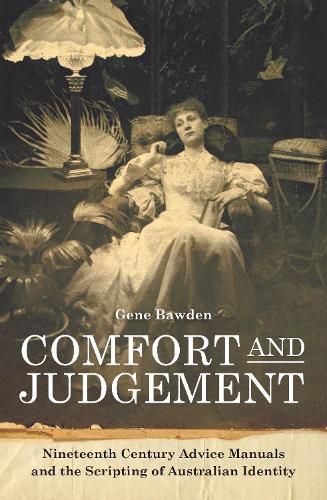Readings Newsletter
Become a Readings Member to make your shopping experience even easier.
Sign in or sign up for free!
You’re not far away from qualifying for FREE standard shipping within Australia
You’ve qualified for FREE standard shipping within Australia
The cart is loading…






‘My journey to this book is the culmination of a long-held fascination with the history and currency of Australia’s domestic interior. Having been born in a remote, desert-bound Queensland town, I have felt its power as a solace; a retreat from the extremities of the Australian environment. The interior provided a zone in which we were kept safe, but so too were our traditions, behaviours and belief systems. As I sifted through the pages of Australia’s nineteenth-century advice manuals on the subject, featuring caverns of formal furniture suites, patterned carpet, velvet drapes, china cabinets, occasional tables, and collections of ornaments all awkwardly coalescing in spaces impregnated with the acrid waft of furniture polish, I was struck by the continuum of the interior and its purpose; as a refuge to induce both comfort and confidence.’
Since the earliest days of colonisation white Australians have protectively swaddled themselves in the domestic interior. Faced with a disconcerting and entirely alien environment, the replication of English interiors provided the colony’s settler communities with the tether they sought to a guiding homeland and its comforting rules and practices. Though Australian identity is aligned, truthfully or otherwise, to the ‘masculine’ exterior: the bush, the outback and the beach, women were imperative to settler communities, and so too were the interiors they created. Comfort and Judgement provides a richer, deeper understanding of the Australian home than has been realised before.
$9.00 standard shipping within Australia
FREE standard shipping within Australia for orders over $100.00
Express & International shipping calculated at checkout
‘My journey to this book is the culmination of a long-held fascination with the history and currency of Australia’s domestic interior. Having been born in a remote, desert-bound Queensland town, I have felt its power as a solace; a retreat from the extremities of the Australian environment. The interior provided a zone in which we were kept safe, but so too were our traditions, behaviours and belief systems. As I sifted through the pages of Australia’s nineteenth-century advice manuals on the subject, featuring caverns of formal furniture suites, patterned carpet, velvet drapes, china cabinets, occasional tables, and collections of ornaments all awkwardly coalescing in spaces impregnated with the acrid waft of furniture polish, I was struck by the continuum of the interior and its purpose; as a refuge to induce both comfort and confidence.’
Since the earliest days of colonisation white Australians have protectively swaddled themselves in the domestic interior. Faced with a disconcerting and entirely alien environment, the replication of English interiors provided the colony’s settler communities with the tether they sought to a guiding homeland and its comforting rules and practices. Though Australian identity is aligned, truthfully or otherwise, to the ‘masculine’ exterior: the bush, the outback and the beach, women were imperative to settler communities, and so too were the interiors they created. Comfort and Judgement provides a richer, deeper understanding of the Australian home than has been realised before.